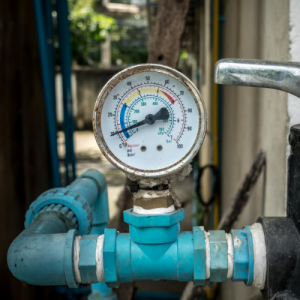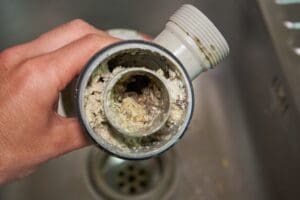Approaches to Deal with Low Water Pressure in Your Home
Approaches to Deal with Low Water Pressure in Your Home
Blog Article
Almost everyone maintains their unique opinion when it comes to 10 Reasons for Low Water Pressure in Your House.

Low water pressure in your house can be a frustrating trouble, impacting every little thing from showering to cleaning recipes. If you're experiencing weak water circulation, there are several feasible causes and services to explore. In this overview, we'll review usual reasons for low tide stress and functional actions to deal with the issue properly.
Introduction to Low Tide Pressure
Low water stress occurs when the circulation of water from your faucets, showers, and various other fixtures is weaker than usual. This can make daily tasks a lot more difficult and much less efficient. Comprehending the reasons for low water stress is crucial to locating the ideal option.
Usual Reasons For Low Water Pressure
Faulty Stress Regulators
Stress regulators are in charge of preserving constant water stress in your home. If they malfunction, it can lead to low tide pressure or irregular flow throughout the house.
Municipal Water Supply Issues
Sometimes, the issue exists outside your home. Local supply of water concerns, such as main line leakages or maintenance job, can momentarily reduce water stress in your area.
Pipe Obstructions
Over time, pipes can become obstructed with natural resource, debris, or debris, restricting the circulation of water. This is an usual problem in older homes with galvanized steel pipelines.
Corrosion
Corrosion within pipelines can result in leakages and lowered water stress. Corrosion buildup can constrict water flow, especially in maturing plumbing systems.
How to Diagnose Low Tide Pressure
Examining Pipes
Evaluate noticeable pipelines for indicators of leaks, rust, or clogs. Focus on any type of uncommon sounds, such as knocking or rattling pipelines, which can suggest concerns within the plumbing system.
Consulting with a Plumber
If you're not able to identify the root cause of low water pressure, consider employing a specialist plumber to perform a thorough assessment. They can identify underlying concerns and advise suitable options.
Examining Faucets and Components
Beginning by evaluating the water pressure at various taps and fixtures throughout your home. If the issue is isolated to details locations, it may suggest local problems.
Do It Yourself Solutions to Take Care Of Low Water Pressure
Flushing Water Heater
Sediment accumulation in the hot water heater can limit circulation and lower performance. Purging the storage tank regularly assists remove sediment and keep ideal performance.
Examining Stress Regulator
Ensure that the pressure regulatory authority is functioning correctly. Adjusting or replacing the regulator can aid recover appropriate water pressure throughout your home.
Cleaning Up Aerators and Showerheads
Natural resources can build up in aerators and showerheads, minimizing water flow. Remove and cleanse these elements consistently to enhance water stress.
Clearing Up Clogs in Piping
For minor obstructions, try using a plumbing snake or chemical drain cleaner to clear obstructions in pipes. Beware when using chemicals and comply with safety and security guidelines.
When to Call a Professional Plumber
If DIY efforts fall short to fix the concern or if you presume substantial plumbing problems, it's finest to seek support from a certified plumber. They have the proficiency and tools to attend to intricate problems safely and effectively.
Safety Nets to Maintain Water Stress
Setting Up a Pressure Booster
Take into consideration mounting a stress booster pump to improve water pressure in areas with consistently reduced flow. This can be especially useful for multi-story homes or buildings with high-demand components.
Tracking Water Usage
Bear in mind water use behaviors and avoid overtaxing the plumbing system. Basic changes, such as shocking showers and laundry tons, can help maintain sufficient water pressure.
Regular Upkeep
Arrange regular upkeep for your plumbing system to avoid concerns such as deterioration, leakages, and obstructions. Dealing with small issues early can help avoid more substantial repairs in the future.
Final thought
Managing low water pressure can be irritating, however identifying the underlying reasons and carrying out appropriate options can recover optimal flow throughout your home. Whether it's cleansing aerators, examining pipes, or talking to a plumber, taking proactive steps can ensure a steady supply of water for your daily needs.
9 Solutions to Low Water Pressure
If you have ever struggled to rinse the shampoo out of your hair, washed your hands under a trickle of water, or been forced to wait for your washing machine to complete a cycle, then you have experienced the nuisance of low water pressure. Low water pressure can turn a simple task into a hassle, but once you identify the cause, either the necessary plumbing fix or a water booster pump can drastically improve your water pressure. In this article, you can learn about nine common causes of low water pressure and how to resolve low water pressure in your home.
How do you know if you have low water pressure?
Testing your home’s water with a pressure gauge is the easiest way to find out if you have low water pressure. Pressure gauges are simple and inexpensive, and once installed, will allow you to check your water pressure with a quick glance.
If your water is from a municipal water supply, select an outdoor faucet near where the main water line enters your home. If your water is from a well, select a faucet that is close to the well’s pressure tank. Attach the pressure gauge to the faucet and tighten it. To get an accurate reading, make sure water isn’t being used anywhere else inside or outside the house, and then fully turn the faucet on. Once the faucet is on, you can read the water pressure on the gauge’s dial. Typical home water pressure should be between 40 and 50 psi, so if the dial reads less than 40 psi, you have low water pressure.
Do water booster pumps increase water pressure?
A water booster pump is a centrifugal pump that improves low water pressure and increases water flow. Much like how a fan’s blades create a gust of air, a water booster pump’s rotating impeller draws water in and then pushes it out with increased force. This force raises the water pressure in a system. A water booster pump is installed where the main water line enters your home, so water pressure is improved in every tap and appliance.
What causes low water pressure?
1. Hard water
If you have hard water, scale can accumulate in your pipes, restrict the water flow, and reduce your water pressure. Hard water has a high mineral content, specifically calcium and magnesium, and scale is formed when these mineral salts dissolve.
The solution: When scale buildup is severe enough to restrict water flow and reduce water pressure, the best solution is to replace your pipes. Products like CLR Calcium, Lime, and Rust remover can diminish scale, but as the scale comes off it may clog your pipes, creating another costly plumbing problem. Not to mention, it is never a good idea to put harsh chemicals in the pipes that supply your drinking water. To prevent scale in the future, we recommend installing a water softener.
The main water shut off valve is not open.
If your water pressure has suddenly decreased and you recently had a repair done, make sure the main water shut off valve is fully open. Most plumbing repairs require the water to be shut off, but if the valve is not completely opened afterward, your water pressure will be restricted.
The solution: Locate your main shut off valve, which is installed where the main water line enters your home, and fully open it by turning it counterclockwise.
A municipal water problem
Low water pressure may not have to do with your own plumbing system. Just like your home’s water supply, the municipal water supply is subject to problems that can cause low water pressure, such as leaks and corrosion.
The solution: Call the municipal water supply to report your low water pressure. Your input may alert them to the problem and will ensure your water pressure is restored as quickly as possible.
Faulty pressure regulator
A pressure regulator is a valve that reduces incoming water pressure as water flows into your home from the main service line. High water pressure can damage pipes and plumbing fixtures, so a pressure regulator is installed to protect your home plumbing system. Most are set to 50 pounds per square inch (psi), but if yours is set lower, your water pressure will feel low. If your pressure regulator is set to 50 psi but your pressure still feels low, it may be broken or clogged.
The solution: Adjust your pressure regulator’s setting to 50 psi if it is currently set lower. If your pressure regulator is faulty, ask a plumber to replace it.
A leak
A leak can reduce water flow and water pressure. To determine if you have a leak, turn all the faucets off inside and outside of your home. About an hour later, check your water meter. If it indicates you are using water, you have a leak.
The solution: Enlist the help of a licensed plumber to locate and repair the leak. Once the repairs are complete, your water pressure should return to normal.
https://www.freshwatersystems.com/blogs/blog/what-causes-low-water-pressure-and-how-to-improve-it

We had been made aware of that write-up on 4 Ways to Troubleshoot Low Water Pressure through a pal on a different website. Remember to set aside a second to distribute this post if you enjoyed it. Thank you for your time. Revisit us soon.
Visit Url Report this page